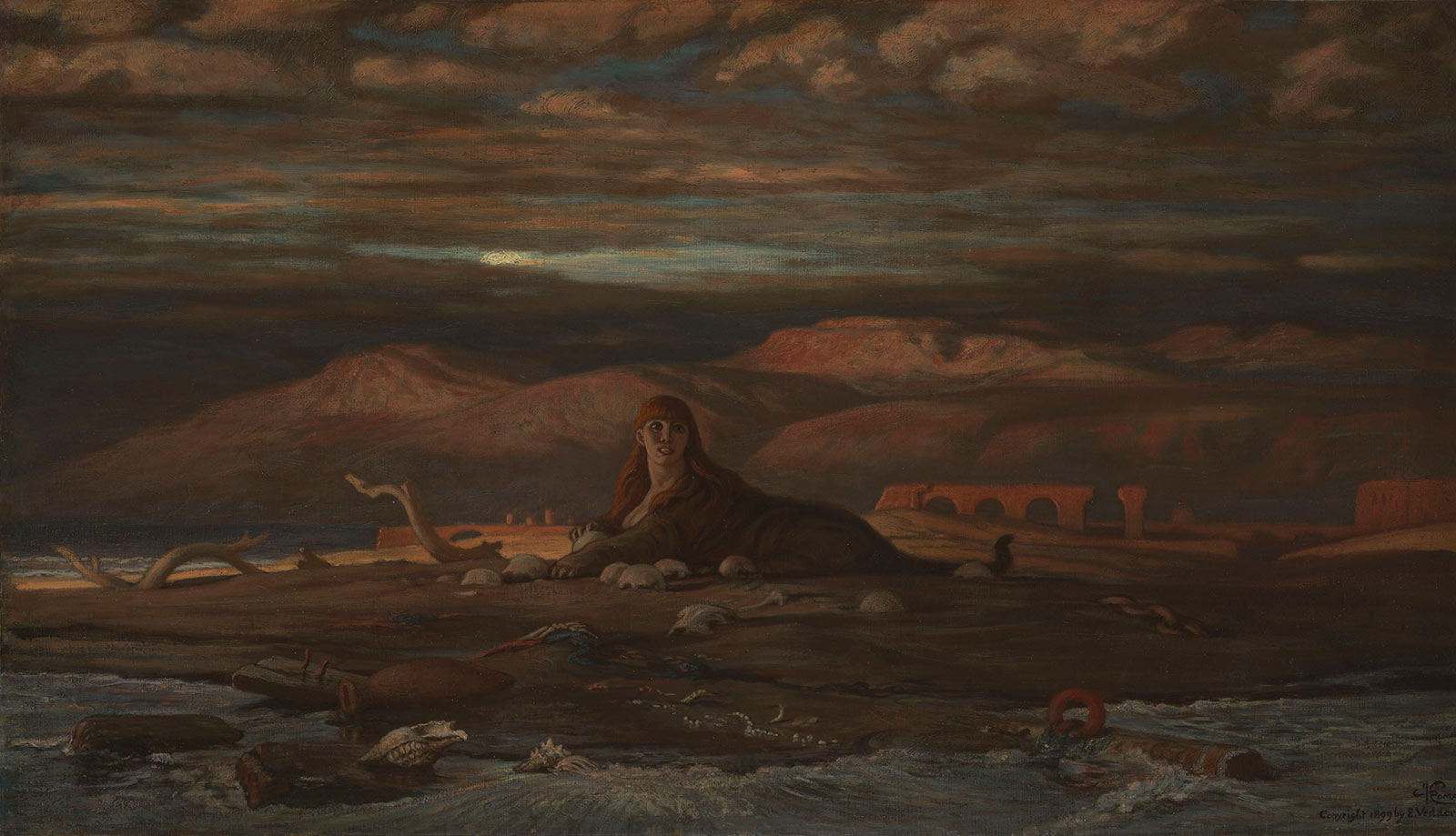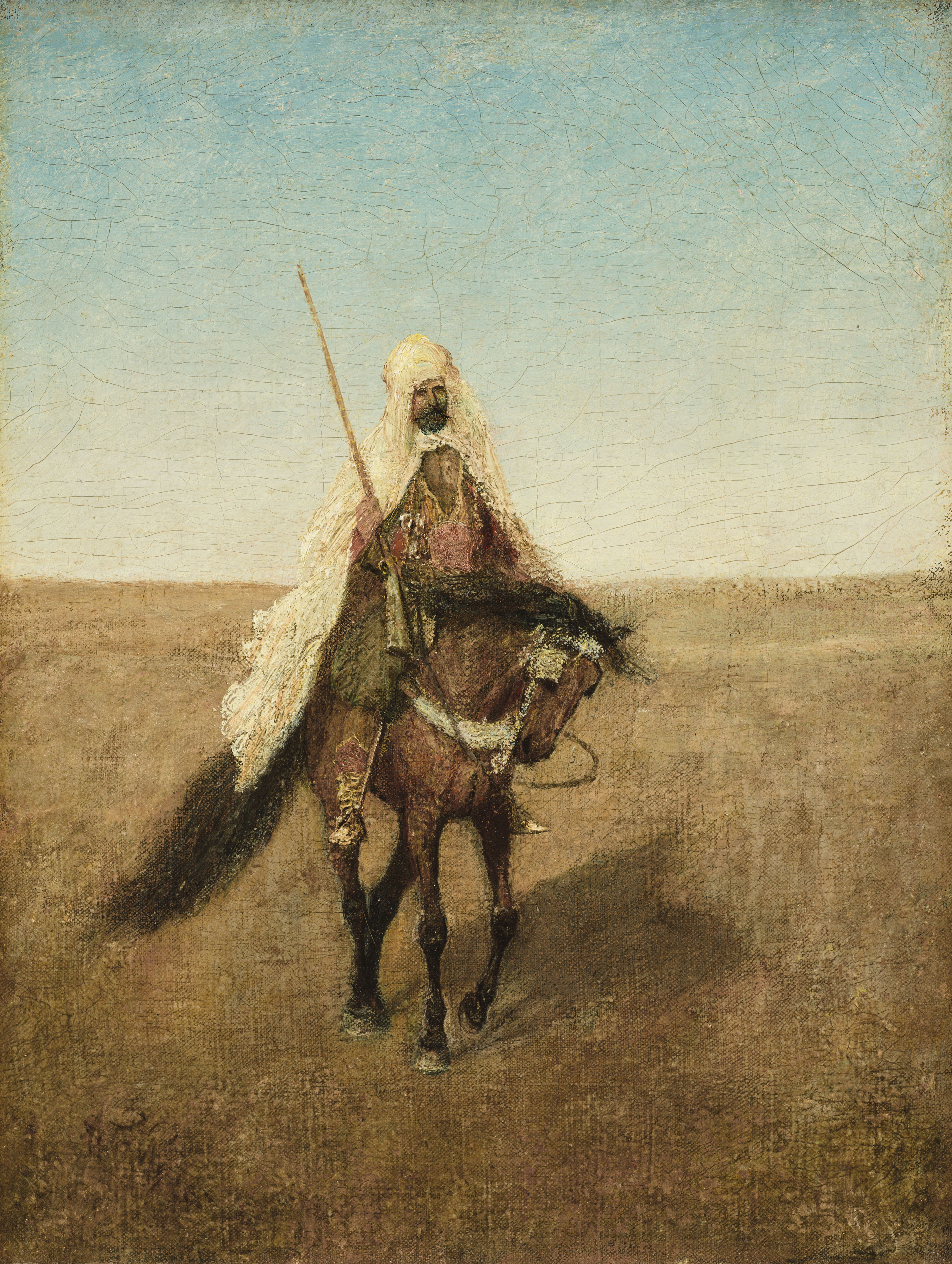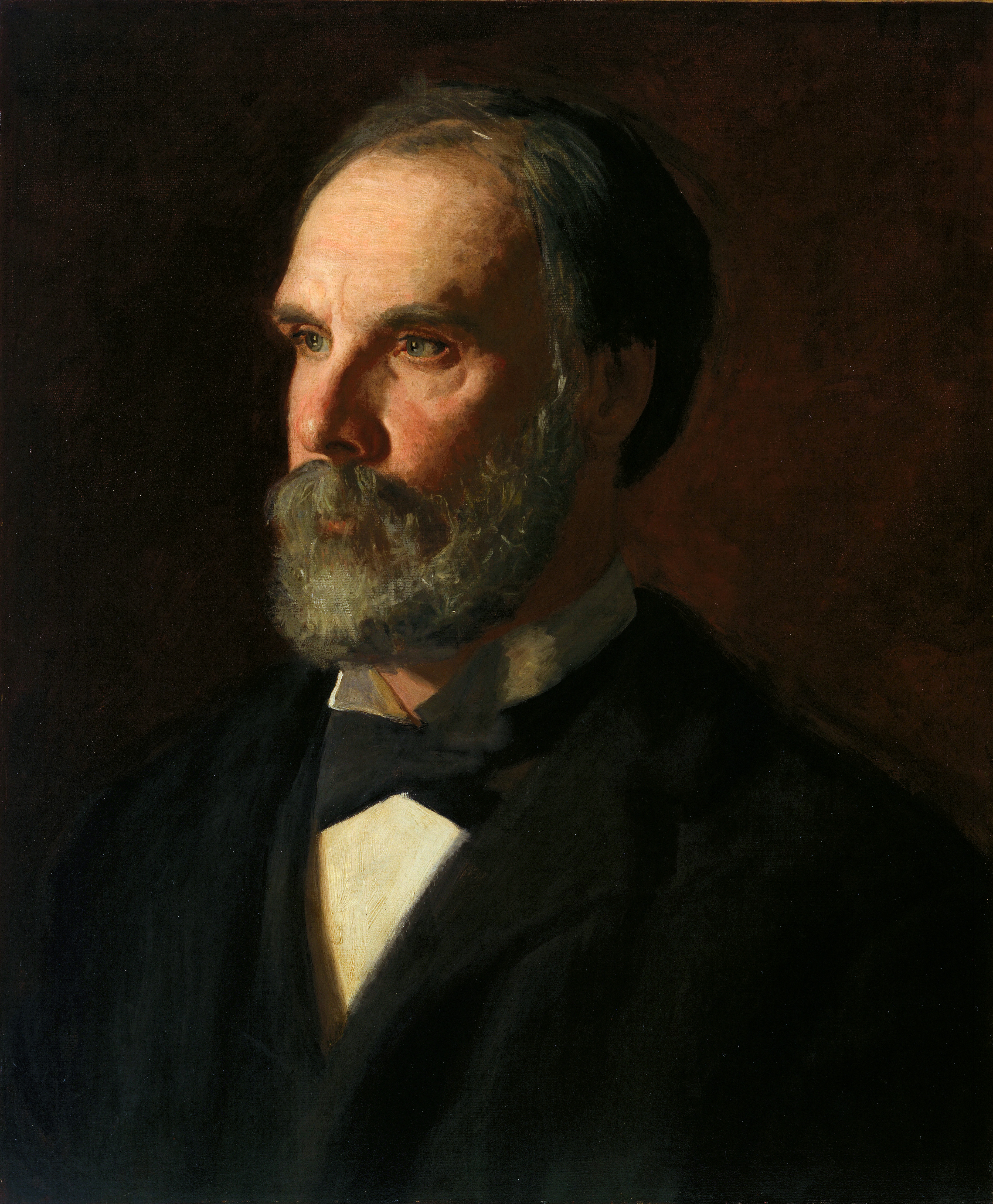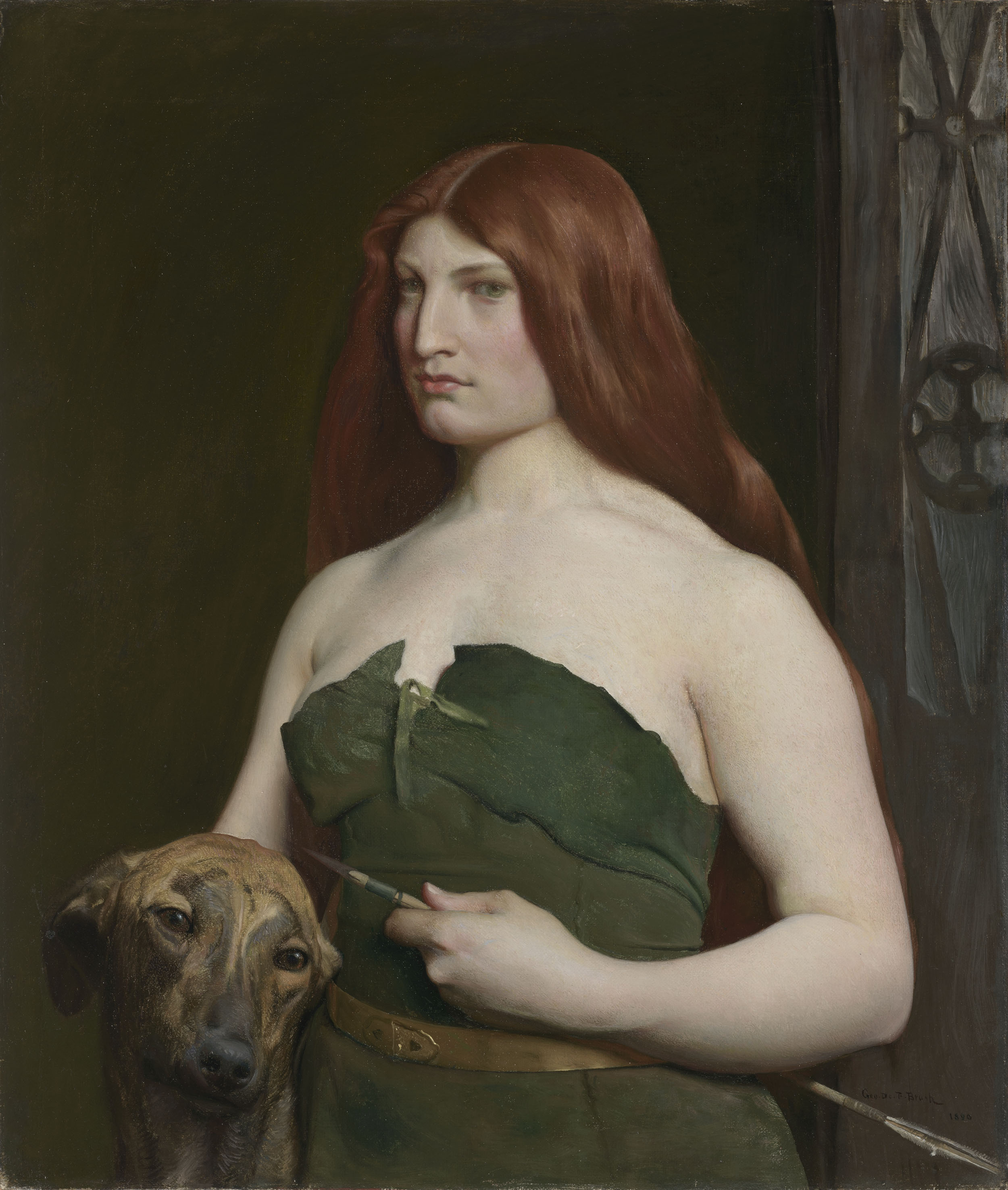Study for "The Last of the Buffalo"
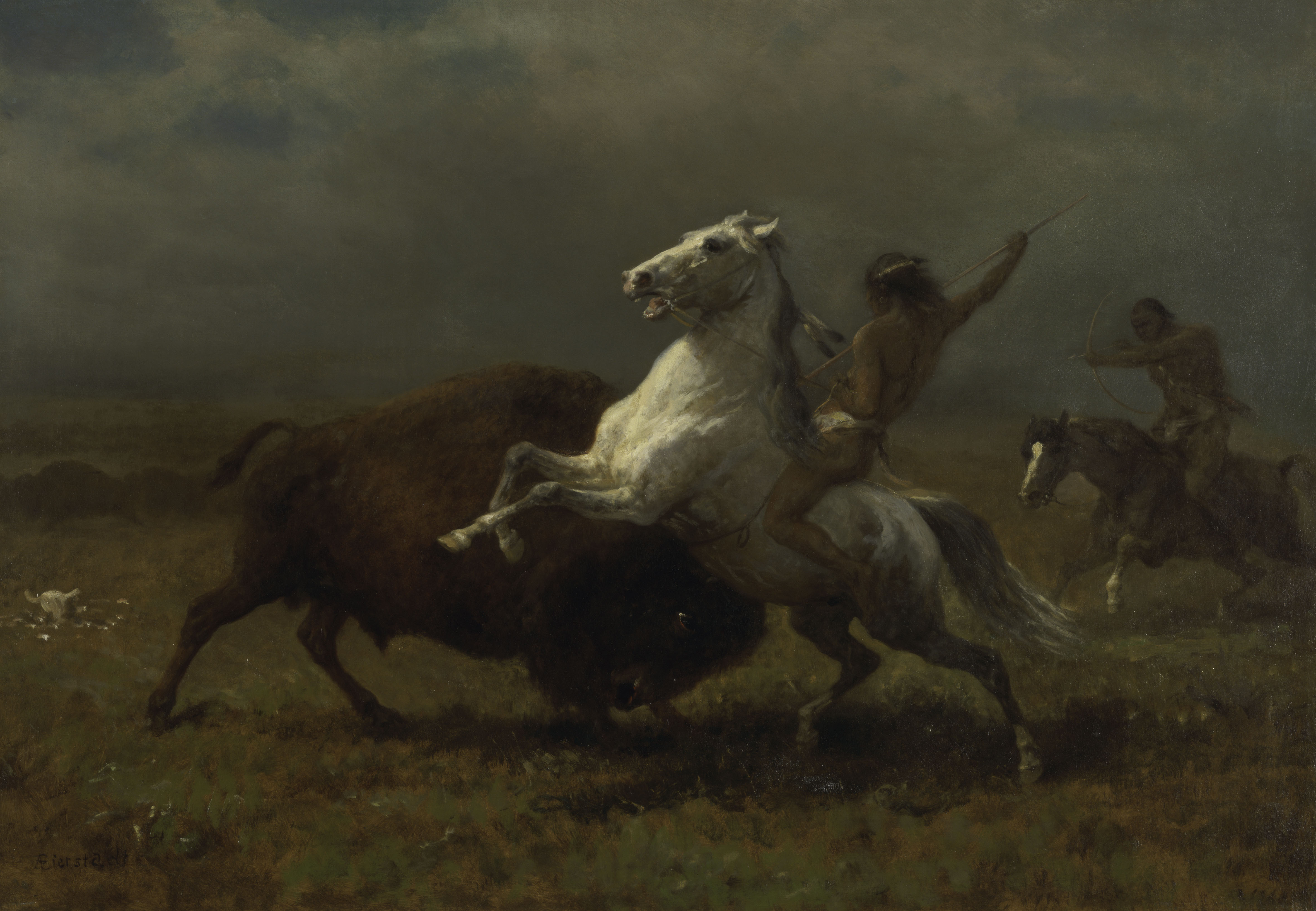
How do the histories of Native Americans affect life in this country today?
Bierstadt’s warrior skillfully rides bareback on a rearing horse, ready to strike a struggling buffalo with his spear. His muscular body and athletic pose recall the classical conventions of ancient Greek sculpture. The scene takes place against the indistinct backdrop of an endless prairie and a flattened, cloud-filled sky. A second Native American on horseback rushes into view from the middle ground, attempting to aid the hunt with his arrow aimed at the burly beast.
